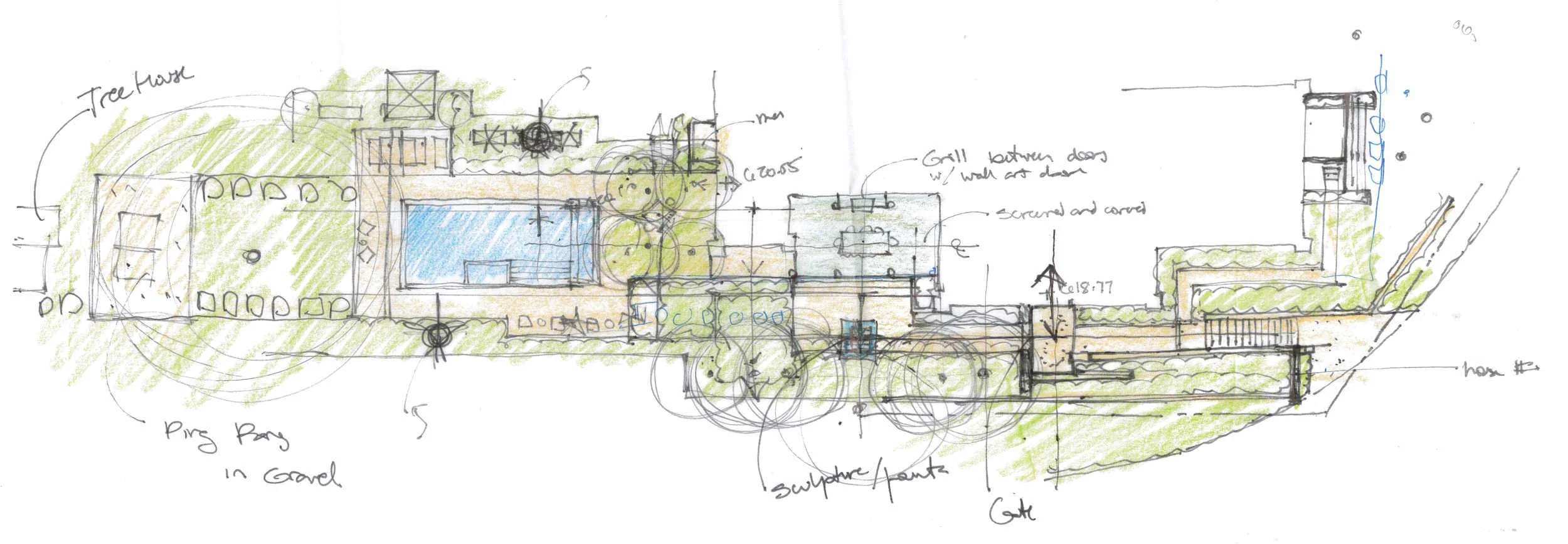Garden Geometries: Line
By Vera Gates
The simple, straightforward line is so basic that we often take it for granted, yet the line is the foundation of all design.
The concept of line is one of the simplest and most elegant of design tools. Primarily used as a basic ordering system, the line typically evolves into a series of other forms to create a compositional whole. We tend to think of line as a journey, the creation of, not only form, but connection… from one point, one place to another.
The line is an endlessly hardworking, playful, functional and beautiful form, from with which anything can be designed. Line is completely manageable and comprehensible, easily ordering space and providing human orientation to both the natural and built worlds.
We begin design studies with a series of gestural lines, as a means of ordering space. We identify centerlines and sight lines, emanating from the architecture. Then we begin to reimagine the site and create connections from one point to another and from one place to another. We identify focal points, boundaries and even the lines of the sun’s axis. As the design evolves, the actual form varies and expands.
One of the most interesting aspects of the line in design is the power that it gains when it is repeated. The repeating line pattern offers so much opportunity to interpret and express ideas of material, volume and dimension. These elements may be repeated, staggered, shifted and offset, narrowed or widened, all of which create variety and interest.
The line, represented in plan view, evolves and becomes multi dimensional, rising up three dimensionally as seat/retaining walls, free standing fences, a water wall or fountain.







